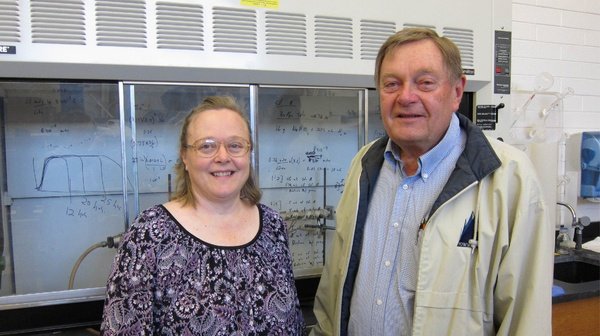Science Meets Survivor
Nov. 19, 2012

The same organization famous for bringing boys into the wild will now be bringing boys into the lab.
Under the direction of other scouting volunteers tasked with developing a STEM (Science, Technology, Engineering, and Mathematics) program for the Boy Scouts of America (BSA), Lee Hansen, a retired chemistry professor, and his daughter, Thea Buell, have volunteered to write articles for BSA’s magazine,Boys' Life.
The purpose of the STEM program in BSA is to interest more young men and women to prepare for jobs in scientific fields. This program is focused especially on sparking young people’s interest in STEM fields before they enter college.
"What this whole program is designed to do is to get kids interested in these subjects and essentially show them that they can be fun and interesting," Hansen said.
To interest more young people in the sciences, Hansen and other volunteers are helping to add science-based awards to all the Scout programs, from 7-year-old Cub Scouts to 20-year-old Venture Scouts. The awards have titles such as the Nova Award, the Thomas Edison Supernova Award, and the Dr. Albert Einstein Supernova Award.
The STEM articles highlight fun science experiments that kids can do at home. Hansen was the perfect fit for the job, since he already had experience getting freshmen interested in the sciences. However, he didn’t have much experience writing for teenagers, so he asked his daughter, a children’s writer, to help him.
"I can do high-level science, technical writing, but when you’re trying to write to eight-year-old boys, the words I use are too big," said Hansen. "So my daughter does that part of it."
The father-daughter team works together to write scientific experiments in a way that young readers will understand. They plan on expanding the operation to work with other volunteers to write these articles. Dr. Hansen and his daughter have always felt it important to help people understand science.
"A basic understanding of science helps you understand medical care better," Buell said. "You understand driving better—with the hazards. You’re a better consumer. It just improves your life."
Thanks to Hansen and Buell, pretty soon scouts just may trade in their tan scout shirts in exchange for white lab coats.
By Curtis Penfold, College of Physical and Mathematical Sciences
Photo by Bryce Holland